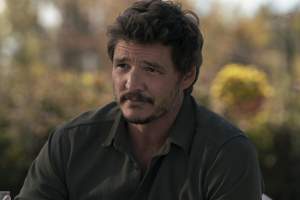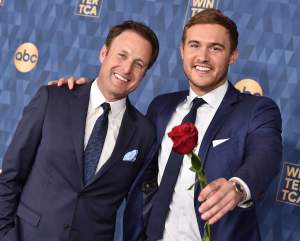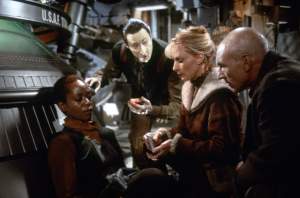CatDog

Paramount Pictures/Nicktoons/YouTube
Oil and water. Business and pleasure. Orange Juice and toothpaste. Cats and dogs. Some things just don’t mix.
But never tell that to Peter Hannan, the creator of CatDog. The premise of the show is your classic odd couple scenario — Dog is a wacky, impulsive slob, Cat is a persnickety and uptight snob. The two are brothers and, despite their differences, the best of friends.
Curious about where these conjoined siblings came from? Well, then you’ll have to check out the special “CatDog and the Great Parent Mystery” 3-part episode that aired as a special TV movie to kick off the final season.
KaBlam!

paramount pictures/classicnick/youtube
From the minds of Robert Mittenthal and the two creators of The Adventure of Pete & Pete (Will McRobb, and Chris Viscardi), KaBlam! was unique for Nickelodeon in that it was an animation showcase, made up of a series of short segments all different art and animation styles.
Henry and June served as the animated hosts, introducing the various segments such as Action League Now!, Sniz & Fondue, and Life with Loopy. The most unique recurring short was Prometheus and Bob, a darker stop-motion segment about an alien who travels to ancient Earth and interacts with a caveman.
The series ran for four seasons and remains one of the most out-of-the-box things Nickelodeon has ever aired.
The Wild Thornberrys

grzegorz77/moviestillsdb
The Wild Thornberrys was yet another Klasky Csupo-produced cartoon Nickelodeon ran for five seasons beginning in 1998. The show takes place in the same universe as Rugrats, another Klasky Csupo property, as the two shows crossed over in the crossover film Rugrats Go Wild.
Thornberrys follows the wild adventures of the titular family who travel the world creating nature documentaries for television. The big Dolittle-esque twist is that Eliza, the youngest daughter in the family, can talk to animals. Though not an “educational” series, the show was lauded for its commitment to accuracy and detail about the animals and environments the family encountered.
The Angry Beavers

moviepics1001
The Angry Beavers ran for four seasons starting in 1997, following the adventures of two Beaver brothers who leave their childhood home and try to make their way living together in a bachelor pad deep in the forest of Oregon.
The brothers, Dag and Norb, certainly have that “odd couple” vibe, though the creative team was smart in flipping some of the typical attributes to keep the dynamic fresh. Just because you’re the lazy slob of the duo doesn’t mean you can’t also be the smart one.
One of the highlights of the series is how often the writers would use actual beaver traits and habits to come up with gags. As clever as it is silly.
Aaahh! Real Monsters

Nicktunes/Youtube/paramount pictures
Nickelodeon cartoons have never been afraid of including punctuation in a title.
Some of the creature designs in Aaahh! Real Monsters are borderline disgusting, and you can tell both the animation team and the writing staff borrowed liberally from other scary-adjacent kids’ content like A Nightmare Before Christmas and the Beetlejuice animated series.
The 52-episode run follows the adventures of three young monsters who live in a New York City landfill and attend monster school to get an education in scaring children. While the show itself isn’t as clever or funny as some of the other Nicktoons, fans who enjoy gross-out gags and jokes about body odor will feel right at home (no judgment).
Hey Arnold!

moviepics1001/moviesillsdb
If Doug was a nostalgia-tinged look at life in the suburbs, Hey Arnold! was the modern update, showing what it’s like to come of age in an urban environment and was an important show for kids who didn’t grow up with the picket fence, two car garage and tire swing that was so often depicted as “normal life” on television.
It focused on the life of Arnold Shortman, our kind-hearted, football-headed protagonist who helps classmates at PS 118 or the eclectic residents of his Grandparents’ tenement building solve problems while also learning some life lessons of his own. It’s certainly one of the best of the “second wave” of Nicktoons.
The Ren & Stimpy Show

movienutt/moviestilsldb
Probably the most controversial cartoon that has ever and will ever air on Nickelodeon, The Ren & Stimpy Show was a strange, surreal, occasionally disgusting, and often brilliant animated series created by John Kricfalusi. Though it was ostensibly “for kids,” the show was filled with adult references and double entendre. This gave the show an edgy, transgressive quality, and although those jokes safely flew over the heads of the younger audience, it greatly annoyed network censors and parent groups.
Still, for a while, Ren & Stimpy was the most-watched show in all of cable television.
Rugrats

moviepics1001/moviestillsdb
The reason Rugrats was such a massive success and endured as an important part of 90s pop culture was that it was able to equally please its two audiences without ever alienating either. For children, the show was a fun series about a group of courageous babies who conquer relatable day-to-day problems through epic adventures both real and imagined. For adults, though, the show was a satire of the 1990s thirty-something parents seen through the eyes of their children.
The series would go on to see many spin-offs, sequel films, and reboots, but none have captured audiences quite like the original did.
Doug

moviepics1001/moviestills
Created by animator, cartoonist, and author Jim Jinkins, Doug ran for four seasons on Nickelodeon and was the first original animated series produced for the network.
The star of the show is Douglas Funnie, an eleven-year-old boy who moves with his family to Bluffington. Each episode is framed through entries in Doug’s journal and often features fantasy sequences driven by Doug’s overactive imagination.
Doug was quite different from other animated shows of its era. It was quiet and thoughtful, with a hand-drawn aesthetic and a unique “scat/a capella” soundtrack. The whole thing has a timeless quality that keeps Doug as fresh today as it was when it first aired in 1991.
Rocko’s Modern Life

nicktunes/paramount pictures/youtube
In many ways, Rocko’s Modern Life is like the Seinfeld of Nickelodeon’s animated series. As the title suggests, the show focuses on the mundanity and great difficulties of simply navigating life’s challenges, both great and small.
Similar to Ren & Stimpy, the series’ humor pushed the limits of what might have been acceptable on the network, with plenty of jokes thrown in that will only be picked up on by adults. Kids will enjoy the slapstick and colorful characters that make up Rocko’s friend group, while everyone else can enjoy the show as a brilliant satire of mid-90s American life.







